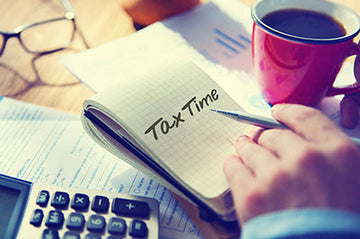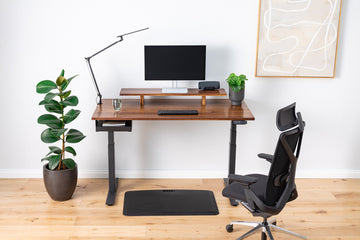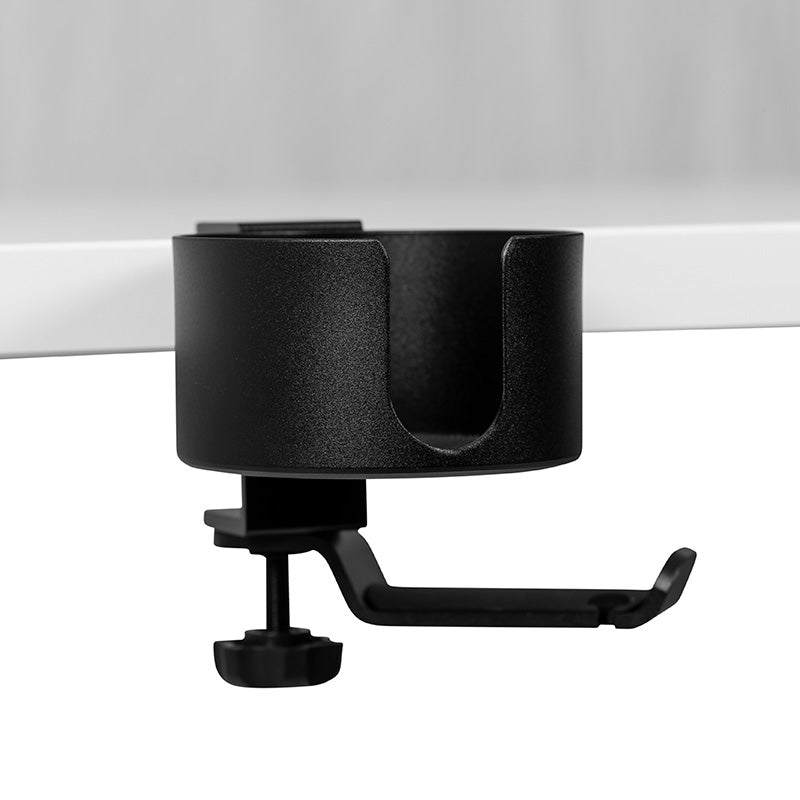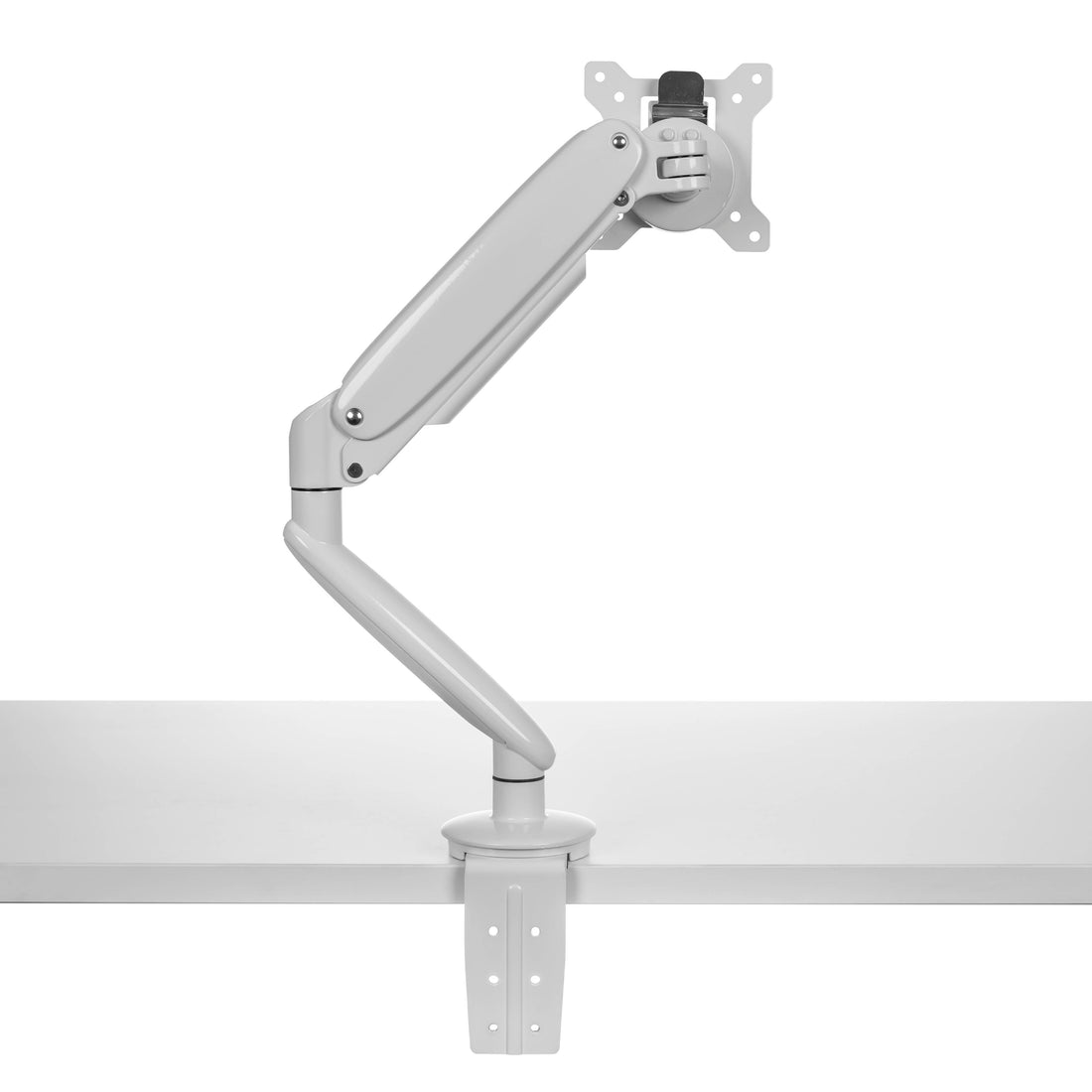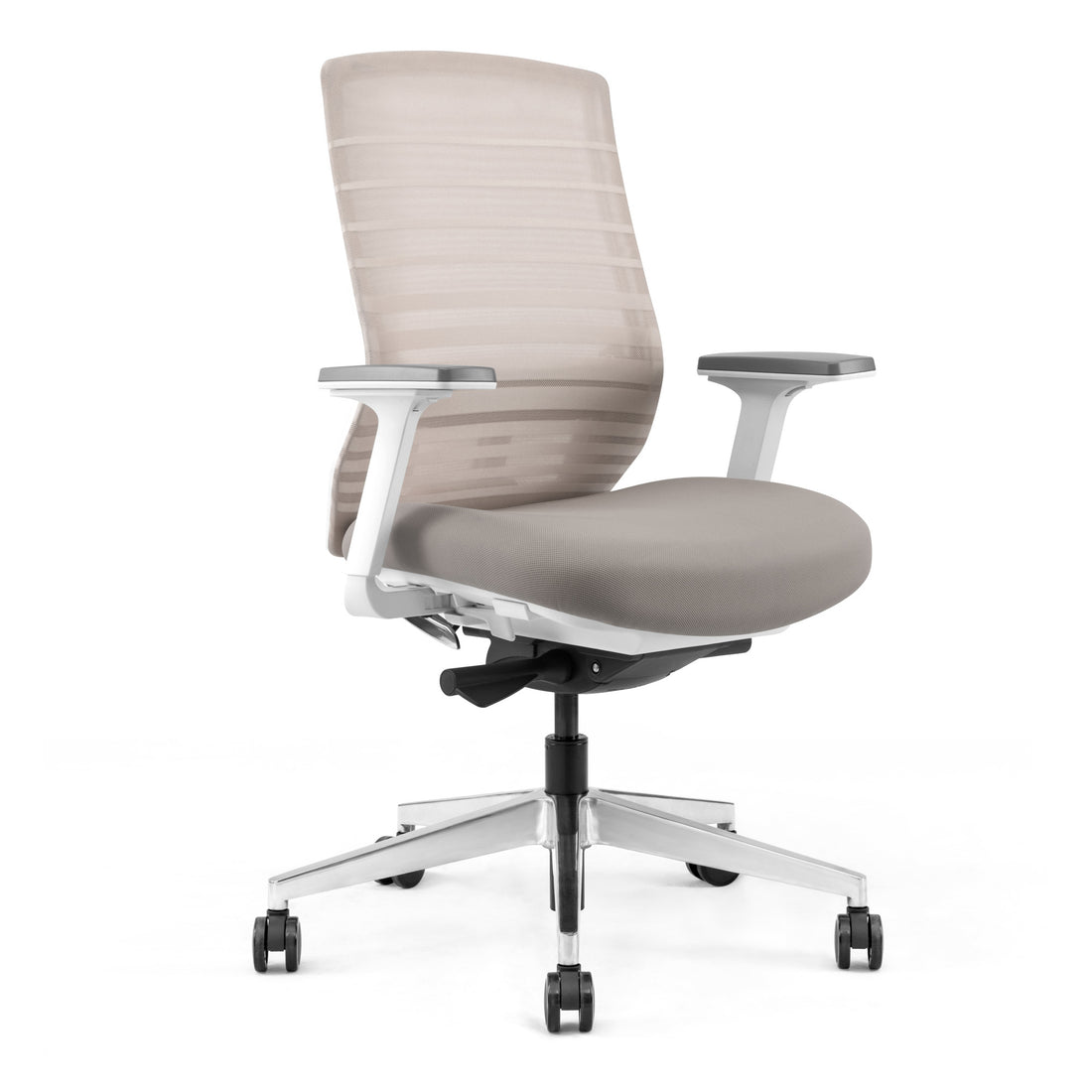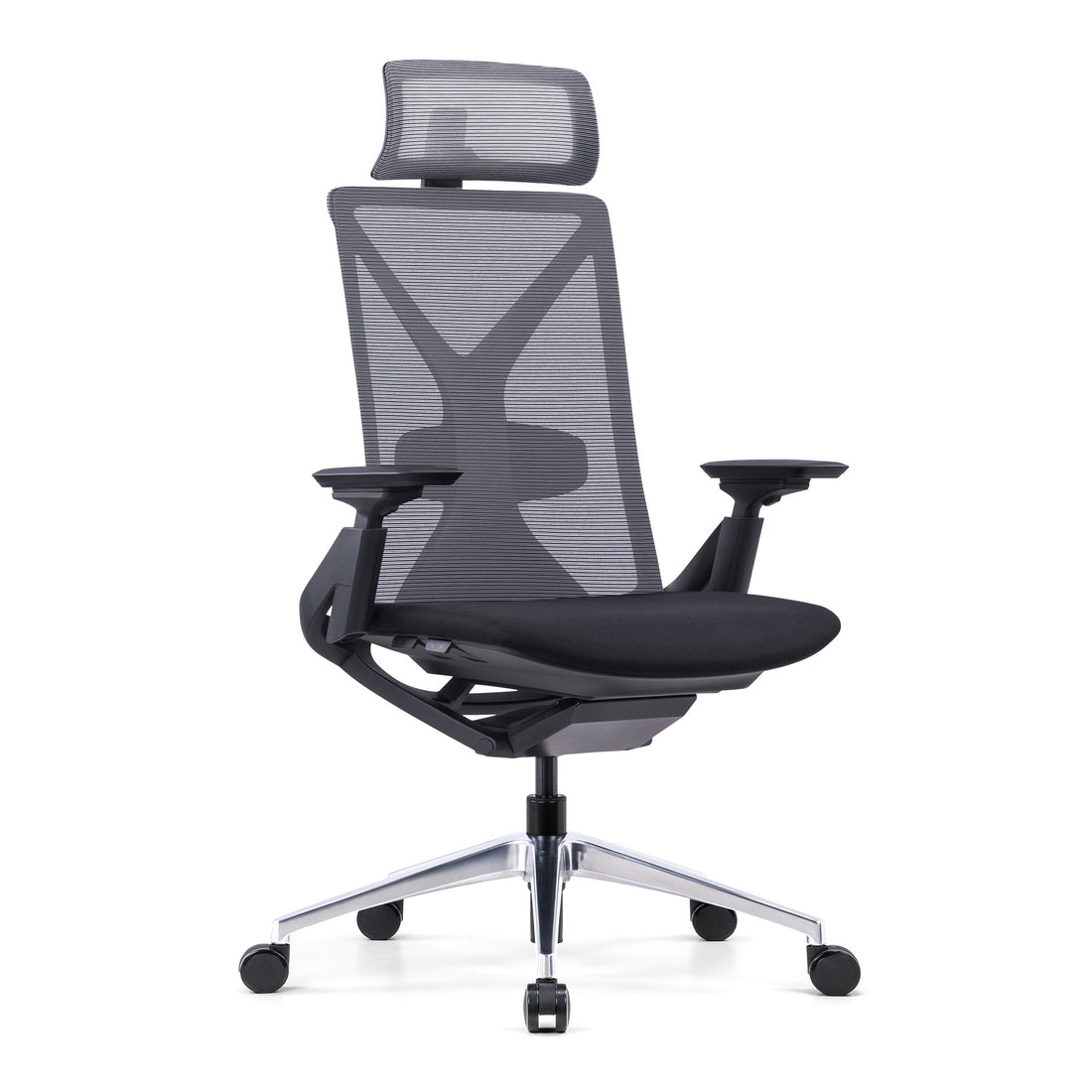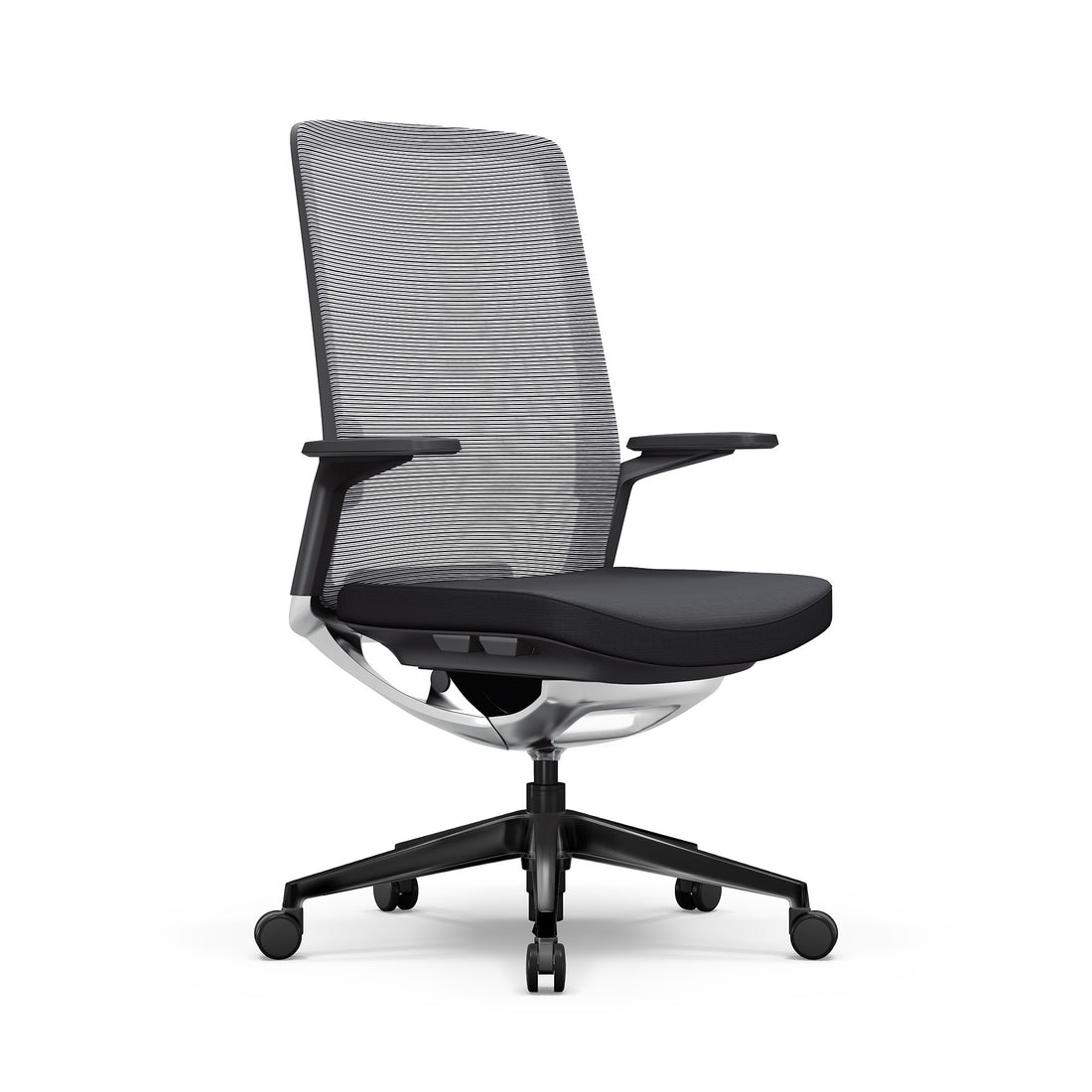If you want to make the most of your office furniture investments, understanding the desk depreciation rate is key. This guide thoroughly explains how depreciation applies to desks, including standing desks, and the potential tax benefits.
We cover key aspects such as the desk's effective life and home office depreciation and answer the important question: Can you claim desk on tax? Additionally, you’ll learn about the Australian Tax Office (ATO) guidelines and how businesses and home office users can take advantage of these rules to reduce taxable income and stay compliant with tax regulations.
This article offers a general look at how desk depreciation works, but it’s important to remember that tax laws can vary depending on your specific circumstances. The information here isn't meant to replace personalized tax advice. For guidance that's tailored to your situation and to ensure you're following the right tax rules, it’s always a good idea to consult a qualified tax professional who can provide expert insight.

What is Desk Depreciation?
Depreciation is the gradual decline in the value of an asset, such as a desk, over time due to factors like wear and tear, aging, and technological obsolescence. Every desk has a depreciation rate, indicating how much of its value is lost yearly. In office furniture, the desk depreciation rate is determined by the asset's effective life—the expected number of years the desk will remain useful before needing replacement. The Australian Tax Office (ATO) provides specific guidelines determining the rate at which assets like desks can be depreciated, ensuring that businesses and individuals can claim appropriate deductions.
By understanding these rates, businesses can plan their tax strategies effectively and spread out the cost of furniture over several years, making significant investments more manageable.
When outfitting an office with ergonomic office chairs like the ones from buro ergonomic office chairs, these chairs follow similar depreciation schedules, allowing businesses to maximize tax benefits.
How Depreciation Affects Your Finances
Claiming depreciation on desks, particularly standing desks, offers several financial advantages. By recognizing the desk depreciation rate, businesses and individuals can lower their taxable income, resulting in tax savings. The depreciation rate allows businesses to write off the desk’s declining value as a tax-deductible expense each year, spreading the initial investment across the asset’s effective life. This process alleviates the financial burden of purchasing expensive office equipment, as annual deductions offset the cost.
For individuals working from home, home office depreciation provides a similar benefit. Whether traditional or standing, desks can be depreciated based on their work-related use. This means that the percentage of time the desk is used for work purposes can be applied to its depreciation rate, allowing for proportional deductions. For example, if a standing desk is used 70% of the time for work, 70% of its depreciation rate can be claimed as a tax deduction. Over time, these deductions add up, helping to reduce the overall cost of the desk and improve cash flow.
Let’s examine the depreciation process using a practical example, focusing on traditional and standing desks.
Example of Desk Depreciation Calculation
Consider a scenario where a business purchases a standing desk for $1,200. If the desk is determined to have a useful life of 10 years, the business could depreciate the cost evenly over that period, resulting in a $120 deduction per year. Alternatively, the business could use a method allowing larger deductions in the earlier years, with smaller amounts claimed later. This approach helps businesses recover the cost of office furniture while benefiting from ongoing tax deductions.
Alternatively, the diminishing value method could be applied, where a larger portion of the desk’s value is written off in the earlier years, resulting in higher and lower deductions as time goes on. In either case, the desk depreciation rate enables businesses and individuals to gradually recover the cost of their office furniture, lowering their taxable income and offering financial relief over time.
It’s important to consult a tax professional to ensure the correct depreciation method and effective life are applied based on current ATO guidelines.
Understanding Desk Effective Life
What is Effective Life?
The effective life of an asset refers to the length of time the ATO expects the asset to remain functional and provide value before it is fully depreciated. The desk effective life varies depending on the type of desk, its materials, and how often it is used. The ATO assigns an effective life to each asset class, including office furniture, to standardize how businesses and individuals calculate depreciation. Once an asset has reached the end of its effective life, it is considered fully depreciated, meaning its entire value has been written off for tax purposes.
Understanding the effective life of desks helps businesses plan for future furniture purchases and ensures that tax deductions are spread appropriately over time. The office desk effective life ATO guidelines provide specific timelines for depreciating office furniture, making it easier for businesses to adhere to tax regulations while benefiting from deductions.

Effective Life of Office Desks in Australia (ATO Guidelines)
The ATO provides general guidelines for the effective life of office furniture, including desks, to help businesses calculate depreciation for tax purposes. These guidelines offer a framework for estimating how long an asset, such as a desk, is expected to be used before its value is fully depreciated. However, these estimates are not set in stone, and the effective life of a desk can vary based on several factors, including the type of desk and how frequently it’s used. The conditions of the office environment. Desks in high-traffic areas, for instance, may wear out faster than those used less frequently or in more controlled environments.
In addition, ATO guidelines may be updated over time to reflect changes in technology, materials, or industry standards, meaning that the effective life of certain office furniture might shift.
This example highlights the importance of staying up-to-date with the latest ATO rulings to ensure compliance with tax regulations. Businesses should also consult a tax professional to accurately assess how depreciation applies to their assets and maximize potential tax benefits. This way, they can make informed financial decisions and properly account for the wear and tear of their office furniture over time.
For further details on calculating depreciation for office furniture and other assets, you can explore helpful resources from the ATO. Visit the Depreciation and Capital Allowances Tool for accurate calculations here, or access the Depreciating Assets Guide 2024 for a comprehensive overview of effective life and depreciation rates here. These tools provide guidance to help businesses and individuals stay compliant with tax regulations.
Claiming Desk Depreciation on Tax in Australia
Can You Claim a Desk on Tax?
Yes, you can claim a tax desk in Australia, provided it is used for business purposes or work-related activities. The desk depreciation rate determines how much of the desk’s value can be written off yearly. For individuals working from home, desks can be claimed as part of home office depreciation, while businesses can claim the full cost of desks as capital assets.
However, it’s important to ensure that the desk is primarily used for work purposes to claim it on tax. If a desk is used for work and personal activities, only the work-related portion of its use can be claimed. For instance, if a standing desk is used for work 80% of the time, only 80% of its depreciation rate can be claimed on tax.
Standing Desk Depreciation Calculation Example
Let’s break down an example to show how depreciation works for a standing desk using the diminishing value method, a widely-used approach in Australian tax.
If a business purchases a standing desk for $800 and applies the diminishing value method for depreciation, the deductions will be larger in the earlier years and gradually decrease over time. If the desk’s effective life is 10 years, the first-year deduction would be calculated as a percentage of its initial value. For example, if the depreciation rate is 20%, the business could deduct $160 in the first year.
As time progresses, the deduction amount will decrease because the base value, or the remaining value of the desk, declines each year. In the second year, the deduction is calculated from the new, lower base value. This method allows businesses to claim higher deductions upfront, which can be beneficial for improving cash flow in the short term, especially when outfitting an office with multiple pieces of equipment.
However, the diminishing value method tends to result in smaller deductions in later years, reflecting the asset's reduced value as it nears the end of its useful life. While this method accelerates the recovery of costs initially, it gradually balances out over time. Businesses should carefully consider their financial strategy when choosing between depreciation methods to determine which aligns best with their tax and cash flow needs.
Desk Depreciation for Businesses
For businesses, claiming depreciation on desks is relatively straightforward. Desks are classified as capital assets, meaning their cost is spread out over their effective life through annual deductions. The desk depreciation rate is calculated based on the desk’s effective life as determined by the ATO.
Let’s say a business purchases five standing desks at $1,200 each. Using the standing desk effective life ATO guidelines, the business would calculate depreciation at 12.5% per year, resulting in an annual deduction of $150 per desk. Over eight years, the company can fully depreciate the cost of the desks while also benefiting from increased workplace ergonomics and productivity.
Instant Asset Write-Off for Small Businesses
Small businesses in Australia may be eligible for additional financial support through the $20,000 Instant Asset Write-Off. In the federal budget of May 2023, the Australian government proposed increasing the instant asset write-off threshold to $20,000 for the 2023/2024 tax year. This allows small businesses with a turnover of less than $10 million to claim an immediate deduction for assets costing up to $20,000 on a per-asset basis.
This includes purchases like standing desks. Eligible businesses can claim a full deduction for standing desks under the $20,000 Instant Asset Write-Off, helping them reduce their taxable income immediately. Proposed amendments aim to increase the threshold to $30,000 and expand eligibility to businesses with turnover up to $50 million. This legislation would allow even more businesses to benefit from an upfront deduction for standing desks if passed.
For tax years after 2023/2024 similar measures may exist and it is recommended that individuals or businesses consult the ATO website or a tax professional as to whether the instant asset write-off provisions exist and apply to their situation.
Desk Depreciation for Home Offices
Home office depreciation offers a valuable tax deduction for individuals who work from home. Desks used in home offices can be depreciated based on the percentage of time they are used for work purposes. For example, if you use your desk for work 60% of the time, you can claim 60% of its depreciation each year, helping reduce your taxable income. This helps reduce your taxable income, making setting up a functional home office more affordable. And, for tips on optimizing your workspace, check out our guide on setting up a home office.
The process for claiming home office depreciation is similar to that for businesses, though the deduction is often smaller due to the mixed-use of the desk. Nonetheless, the ability to claim a portion of the desk’s value each year helps to reduce the overall cost of setting up a home office, making it more affordable for remote workers.
| Claim Category | Home Office | Business Office |
| Standing Desk | Claim as part of home office expenses | Claim as a business asset |
| Laptops | Deduct proportionally based on work use | Deduct as business equipment |
| Monitor | Partial deduction for home use | Full deduction for business use |
| Office Supplies | Deduct based on % of home usage | Full deduction allowed |
How To Cover Your Standing Desk for Tax Deductions: Step-by-Step Guide to Claiming Desk on Tax
Preparing Your Standing Desk for Tax Deductions
Before claiming a standing desk as a tax deduction, ensure it qualifies under ATO guidelines. Start by keeping accurate records of the purchase, including receipts and invoices. It’s also important to track how often the desk is used for work-related activities, mainly if it’s part of a home office setup. The standing desk depreciation rate will apply based on the desk’s effective life, so keeping detailed records will make the tax filing process smoother and more accurate.
If the desk is used in a business setting, it can be classified as a business asset and fully depreciated over its effective life. For home offices, only the portion of the desk used for work can be depreciated, meaning you’ll need to carefully calculate the percentage of work-related use.
Filing Your Tax Claim
Filing your tax claim for a standing desk involves calculating the desk depreciation rate based on its effective life and the method of depreciation used—whether it’s the straight-line method or the diminishing value method. Businesses will include the depreciation amount as a capital expense on their tax returns, while individuals working from home will include it as part of their home office depreciation.
Consult the ATO guidelines when filing your tax return, as rules may change yearly. Tracking other office assets like chairs, monitors, and laptops can further enhance your deductions.
Common Mistakes to Avoid
One common mistake when claiming the desk depreciation rate is failing to track the desk’s use for work purposes accurately. For example, overestimating the percentage of time the desk is used for work can result in disallowed claims during an audit. Similarly, underestimating the desk’s effective life can lead to premature deductions that are not compliant with ATO guidelines. You can avoid these pitfalls and maximize your tax savings by keeping detailed records and following the appropriate depreciation schedules.
Depreciation for Other Office Equipment
Chairs, Laptops, Monitors, and Office Accessories Depreciation
Other office equipment, such as chairs, laptops, and monitors, can depreciate over time. Each item has its own effective life and depreciation rate, determining how much its value can be written off each year. Laptops, for instance, have a much shorter effective life than desks due to their rapid technological obsolescence.
Knowing the depreciation rate for each asset allows businesses and individuals to claim the maximum allowable deductions while maintaining accurate financial records.
Financial Considerations for Standing Desks in Australia
Is Buying a Standing Desk Worth It?
Due to their ergonomic benefits, standing desks have become increasingly popular in modern offices. But beyond the health advantages, standing desks also offer significant financial benefits regarding tax deductions. The standing desk effective life ATO guidelines allow businesses to depreciate standing desks faster than traditional desks, resulting in higher tax savings in the early years of use.
While the initial investment in a standing desk may be higher than a traditional desk, the faster depreciation rate means businesses can recover a larger portion of the cost sooner. This makes standing desks a worthwhile investment for companies looking to improve employee productivity and reduce their tax burden at the same time.
For home office setups, standing desks also provide long-term financial benefits through home office depreciation. By claiming a portion of the desk’s cost each year, individuals can reduce their taxable income and offset the expense of setting up a more ergonomic workspace.
Maximizing Tax Benefits and Productivity
To maximize the tax benefits of a standing desk, it’s important to follow the ATO guidelines and accurately calculate the desk depreciation rate. By doing so, businesses can ensure they’re claiming the full value of their investment while also taking advantage of the productivity and health benefits that standing desks offer.
To reduce their taxable income, businesses should also consider depreciating other office assets, such as chairs, monitors, and accessories. For home offices, keeping track of work-related expenses and claiming depreciation on multiple assets can lead to significant tax savings over time.
Actionable Tips for Claiming Depreciation
When claiming depreciation for your office furniture, it’s important to follow a structured approach to ensure accuracy and maximize your tax benefits. Whether outfitting a business or home office, taking the right steps can help you reduce your taxable income while staying compliant with ATO regulations. Below are some actionable tips to guide you through the process and help you avoid common mistakes:
- Track your usage: Keep a detailed record of how often your desk is used for work purposes to ensure accurate home office depreciation claims.
- Choose the right method: Decide between the straight-line and diminishing value methods based on your financial strategy and tax planning needs.
- Consult ATO guidelines: To stay compliant with tax regulations, always refer to the latest ATO rules regarding desk effective life and depreciation rates.
- Maximize deductions: Don’t forget to claim depreciation on other office equipment, such as monitors, chairs, and laptops, to reduce your taxable income.
- Avoid common mistakes: Ensure that you’re applying the correct standing desk depreciation rate and accurately tracking work-related use to avoid potential issues with your tax claims.
Conclusion
Understanding the desk depreciation rate and desk effective life is crucial for anyone looking to optimize their tax savings while investing in a more productive workspace. Whether outfitting a business office or a home office, knowing how to depreciate desks and other office furniture allows you to spread out the cost of your investments over time while taking advantage of valuable tax deductions.
By following the ATO guidelines, you can ensure that your tax claims are accurate, compliant, and beneficial for your financial health. With proper planning, the cost of standing desks and other office equipment can be fully recovered over time, reducing the overall economic burden and improving cash flow for businesses and individuals.
FAQ
What Is the Desk Depreciation Rate in Australia?
The depreciation rate depends on the effective life assigned to the desk by the ATO. If a desk is determined to have an effective life of 10 years, the depreciation rate may be 10% per year. For specific guidance, consult a tax professional.
How Long Is the Effective Life of a Desk According to ATO?
According to the ATO, the effective life of a traditional office desk is ten years. This means the desk can be depreciated at 10% per year, allowing you to gradually claim the desk's cost as a tax deduction over a decade. This timeline reflects the desk's expected durability and usage in a typical office environment.
Can I Claim a Standing Desk on Tax?
Yes, you can claim a standing desk on tax if used for business or work purposes. Standing desks can be depreciated at 12.5% per year. This applies to both businesses and individuals working from home. You can claim the full cost for business use, while home office users can claim a proportion based on how often the desk is used for work.
How Does Home Office Depreciation Work?
Home office depreciation allows you to claim a percentage of your desk’s depreciation based on how much it’s used for work. For example, if you use your desk 70% of the time for work and 30% for personal use, you can claim 70% of its depreciation each year. This helps reduce your taxable income, making setting up a functional home office more affordable.
Can I Claim Other Office Equipment Like Laptops or Monitors on Tax?
Yes, other office equipment like laptops and monitors can also be claimed on tax. The depreciation rate depends on their effective life, and deductions can be claimed based on their business or work-related use.

